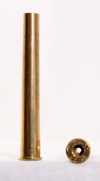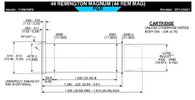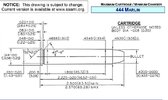This seems the most appropriate place to ask this, if not, my apologies.
I asked in another thread using 223 as an example, but has anyone tried just going longer in case length while keeping the .378” rim diameter vs going the fatter .473” rim diameter trend we have now? It was a thought towards having higher velocity without the accelerated throat erosion.
Long story short, doing what straightwall cartridges done decades ago, 44 Russian, 44 special, 44 magnum, 445 supermag. Or 45/70, 90,110. They couldn’t go fatter in chamber, they drilled the chamber deeper.
Couple examples I could think of that certainly points toward the concept is 308 vs 30-06, 221 fireball vs 223 Remington. I asked about a 30-06 length but 223 case diameter cartridge, but maybe the 308 case length would be a better start.
What do you all think?
I asked in another thread using 223 as an example, but has anyone tried just going longer in case length while keeping the .378” rim diameter vs going the fatter .473” rim diameter trend we have now? It was a thought towards having higher velocity without the accelerated throat erosion.
Long story short, doing what straightwall cartridges done decades ago, 44 Russian, 44 special, 44 magnum, 445 supermag. Or 45/70, 90,110. They couldn’t go fatter in chamber, they drilled the chamber deeper.
Couple examples I could think of that certainly points toward the concept is 308 vs 30-06, 221 fireball vs 223 Remington. I asked about a 30-06 length but 223 case diameter cartridge, but maybe the 308 case length would be a better start.
What do you all think?








